《THERMODYNAMICS AND AN INTRODUCTON TO THERMOSTATISTICS SECOND EDITION》
| 作者 | HERBERT B.CALLEN 编者 |
|---|---|
| 出版 | JOHN WILEY & SONS |
| 参考页数 | 494 |
| 出版时间 | 1985(求助前请核对) 目录预览 |
| ISBN号 | 0471862568 — 求助条款 |
| PDF编号 | 813796648(仅供预览,未存储实际文件) |
| 求助格式 | 扫描PDF(若分多册发行,每次仅能受理1册) |
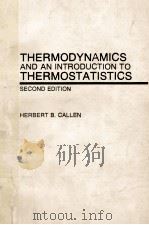
PART ⅠGENERAL PRINCIPLES OF CLASSICAL THERMODYNAMICS1
Introduction The Nature of Thermodynamics and the Basis of Thermostatistics2
1THE PROBLEM AND THE POSTULATES5
1.1 The Temporal Nature of Macroscopic Measurements5
1.2 The Spatial Nature of Macroscopic Measurements6
1.3 The Composition of Thermodynamic Systems9
1.4 The Internal Energy11
1.5 Thermodynamic Equilibrium13
1.6 Walls and Constraints15
1.7 Measurability of the Energy16
1.8 Quantitative Definition of Heat—Units18
1.9 The Basic Problem of Thermodynamics25
1.10 The Entropy Maximum Postulates27
2THE CONDITIONS OF EQUILIBRIUM35
2.1 Intensive Parameters35
2.2 Equations of State37
2.3 Entropic Intensive Parameters40
2.4 Thermal Equilibrium—Temperature43
2.5 Agreement with Intuitive Concept of Temperature45
2.6 Temperature Units46
2.7 Mechanical Equilibrium49
2.8 Equilibrium with Respect to Matter Flow54
2.9 Chemical Equilibrium56
3SOME FORMAL RELATIONSHIPS,AND SAMPLE SYSTEMS59
3.1 The Euler Equation59
3.2 The Gibbs-Duhem Relation60
3.3 Summary of Formal Structure63
3.4 The Simple Ideal Gas and Multicomponent Simple Ideal Gases66
3.5 The “Ideal van der Waals Fluid”74
3.6 Electromagnetic Radiation78
3.7 The “Rubber Band”80
3.8 Unconstrainable Variables; Magnetic Systems81
3.9 Molar Heat Capacity and Other Derivatives84
4REVERSIBLE PROCESSES AND THE MAXIMUM WORK THEOREM91
4.1 Possible and Impossible Processes91
4.2 Quasi-Static and Reversible Processes95
4.3 Relaxation Times and Irreversibility99
4.4 Heat Flow:Coupled Systems and Reversal of Processes101
4.5 The Maximum Work Theorem103
4.6 Coefficients of Engine,Refrigerator,and Heat Pump Performance113
4.7 The Carnot Cycle118
4.8 Measurability of the Temperature and of the Entropy123
4.9 Other Criteria of Engine Performance; Power Output and“Endoreversible Engines”125
4.10 Other Cyclic Processes128
5ALTERNATIVE FORMULATIONS AND LEGENDRE TRANSFORMATIONS131
5.1 The Energy Minimum Principle131
5.2 Legendre Transformations137
5.3 Thermodynamic Potentials146
5.4 Generalized Massieu Functions151
6THE EXTREMUM PRINCIPLE IN THE LEGENDRE TRANSFORMED REPRESENTATIONS153
6.1 The Minimum Principles for the Potentials153
6.2 The Helmholtz Potential157
6.3 The Enthalpy; The Joule-Thomson or “Throttling” Process160
6.4 The Gibbs Potential; Chemical Reactions167
6.5 Other Potentials172
6.6 Compilations of Empirical Data; The Enthalpy of Formation173
6.7 The Maximum Principles for the Massieu Functions179
7MAXWELL RELATIONS181
7.1 The Maxwell Relations181
7.2 A Thermodynamic Mnemonic Diagram183
7.3 A Procedure for the Reduction of Derivatives in Single-Component Systems186
7.4 Some Simple Applications190
7.5 Generalizations:Magnetic Systems199
8STABILITY OF THERMODYNAMIC SYSTEMS203
8.1 Intrinsic Stability of Thermodynamic Systems203
8.2 Stability Conditions for Thermodynamics Potentials207
8.3 Physical Consequences of Stability209
8.4 Le Chatelier’s Principle; The Qualitative Effect of Fluctuations210
8.5 The Le Chatelier-Braun Principle212
9FIRST-ORDER PHASE TRANSITIONS215
9.1 First-Order Phase Transitions in Single-Component Systems215
9.2 The Discontinuity in the Entropy-Latent Heat222
9.3 The Slope of Coexistence Curves; the Clapeyron Equation228
9.4 Unstable Isotherms and First-Order Phase Transitions233
9.5 General Attributes of First-Order Phase Transitions243
9.6 First-Order Phase Transitions in Multicomponent Systems—Gibbs Phase Rule245
9.7 Phase Diagrams for Binary Systems248
10CRITICAL PHENOMENA255
10.1 Thermodynamics in the Neighborhood of the Critical Point255
10.2 Divergence and Stability261
10.3 Order Parameters and Critical Exponents263
10.4 Classical Theory in the Critical Region; Landau Theory265
10.5 Roots of the Critical Point Problem270
10.6 Scaling and Universality272
11THE NERNST POSTULATE277
11.1 Nernst’s Postulate,and the Principle of Thomsen and Bertholot277
11.2 Heat Capacities and Other Derivatives at Low Temperatures280
11.3 The “Unattainability” of Zero Temperature281
12SUMMARY OF PRINCIPLES FOR GENERAL SYSTEMS283
12.1 General Systems283
12.2 The Postulates283
12.3 The Intensive Parameters284
12.4 Legendre Transforms285
12.5 Maxwell Relations285
12.6 Stability and Phase Transitions286
12.7 Critical Phenomena287
12.8 Properties at Zero Temperature287
13PROPERTIES OF MATERIALS289
13.1 The General Ideal Gas289
13.2 Chemical Reactions in Ideal Gases292
13.3 Small Deviations from “Ideality”—The Virial Expansion297
13.4 The “Law of Corresponding States” for Gases299
13.5 Dilute Solutions:Osmotic Pressure and Vapor Pressure302
13.6 Solid Systems305
14IRREVERSIBLE THERMODYNAMICS307
14.1 General Remarks307
14.2 Affinities and Fluxes308
14.3 Purely-Resistive and Linear Systems312
14.4 The Theoretical Basis of the Onsager Reciprocity314
14.5 Thermoelectric Effects316
14.6 The Conductivities319
14.7 The Seebeck Effect and the Thermoelectric Power320
14.8 The Peltier Effect323
14.9 The Thomsen Effect324
ART ⅡTATISTICAL MECHANICS329
15STATISTICAL MECHANICS IN THE ENTROPY REPRESENTATION:THE MICROCANONICAL FORMALISM329
15.1 Physical Significance of the Entropy for Closed Systems329
15.2 The Einstein Model of a Crystalline Solid333
15.3 The Two-State System337
15.4 A Polymer Model—The Rubber Band Revisited339
15.5 Counting Techniques and their Circumvention;High Dimensionality343
16THE CANONICAL FORMALISM; STATISTICAL MECHANICS IN HELMHOLTZ REPRESENTATION349
16.1 The Probability Distribution349
16.2 Additive Energies and Factorizability of the Partition Sum353
16.3 Internal Modes in a Gas355
16.4 Probabilities in Factorizable Systems358
16.5 Statistical Mechanics of Small Systems:Ensembles360
16.6 Density of States and Density-of-Orbital States362
16.7 The Debye Model of Non-metallic Crystals364
16.8 Electromagnetic Radiation368
16.9 The Classical Density of States370
16.10 The Classical Ideal Gas372
16.11 High Temperature Properties—The Equipartition Theorem375
17ENTROPY AND DISORDER; GENERALIZED CANONICAL FORMULATIONS379
17.1 Entropy as a Measure of Disorder379
17.2 Distributions of Maximal Disorder382
17.3 The Grand Canonical Formalism385
18QUANTUM FLUIDS393
18.1 Quantum Particles; A “Fermion Pre-Gas Model”393
18.2 The Ideal Fermi Fluid399
18.3 The Classical Limit and the Quantum Criteria402
18.4 The Strong Quantum Regime; Electrons in a Metal405
18.5 The Ideal Bose Fluid410
18.6 Non-Conserved Ideal Bose Fluids; Electromagnetic Radiation Revisited412
18.7 Bose Condensation413
19FLUCTUATIONS423
19.1 The Probability Distribution of Fluctuations423
19.2 Moments and The Energy Fluctuations424
19.3 General Moments and Correlation Moments426
20VARIATIONAL PROPERTIES,PERTURBATION EXPANSIONS,AND MEAN FIELD THEORY433
20.1 The Bogoliubov Variational Theorem433
20.2 Mean Field Theory440
20.3 Mean Field Theory in Generalized Representation;the Binary Alloy449
PART ⅢFOUNDATIONS455
21POSTLUDE:SYMMETRY AND THE CONCEPTUAL FOUNDATIONS OF THERMOSTATISTICS455
21.1 Statistics455
21.2 Symmetry458
21.3 Noether’s Theorem460
21.4 Energy,Momentum and Angular Momentum; the Generalized “First Law” of Thermodynamics461
21.5 Broken Symmetry and Goldstone’s Theorem462
21.6 Other Broken Symmetry Coordinates—Electric and Magnetic Moments465
21.7 Mole Numbers and Gauge Symmetry466
21.8 Time Reversal,the Equal Probability of Microstates,and the Entropy Principle467
21.9 Symmetry and Completeness469
APPENDIX ASOME RELATIONS INVOLVING PARTIAL DERIVATIVES473
A.1 Partial Derivatives473
A.2 Taylor’s Expansion474
A.3 Differentials475
A.4 Composite Functions475
A.5 Implicit Functions476
APPENDIX BMAGNETIC SYSTEMS479
GENERAL REFERENCES485
INDEX487
1985《THERMODYNAMICS AND AN INTRODUCTON TO THERMOSTATISTICS SECOND EDITION》由于是年代较久的资料都绝版了,几乎不可能购买到实物。如果大家为了学习确实需要,可向博主求助其电子版PDF文件(由HERBERT B.CALLEN 1985 JOHN WILEY & SONS 出版的版本) 。对合法合规的求助,我会当即受理并将下载地址发送给你。
高度相关资料
-
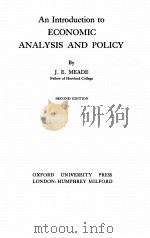
- AN INTRODUCTION TO ECONOMIC ANALYSIS AND POLICY SECOND EDITION
- 1937 OXFORD UNIVERSITY PRESS
-

- AN INTRODUCTION TO COMPUTERS AND INFORMATION PROCESSING SECOND EDITION
- 1985年 JOHN WILEY & SONS
-
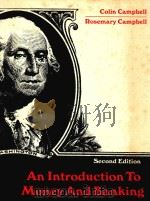
- AN INTRODUCTION TO MONEY AND BANKING SECOND EDITION
- 1975 The Dryden Press
-
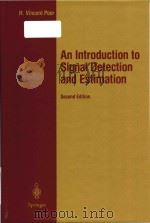
- An introduction to signal detection and estimation (Second Edition)
- 1994 Springer-Verlag
-

- AN INTRODUCTION TO PARASITOLOGY SECOND EDITION
- 1979 UNIVERSITY PARK PRESS
-

- AN INRODUCTION TO EPIDEMIOLOGY SECOND EDITION
- 1983 MACMILLAN PRESS
-

- AN INTRODUCTION TO EVIDENCE SECOND EDITION
- 1956 SWEET & MAXWELL
-
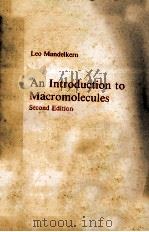
- AN INTRODUCTION TO MACROMOLECULES SECOND EDITION
- 1972 SPRINGER-VERLAG NEW YORK INC
-
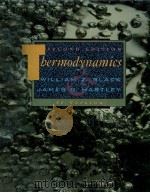
- THERMODYNAMICS SECOND EDITION
- 1991 HARPER COLLINS PUBLISHERS
-
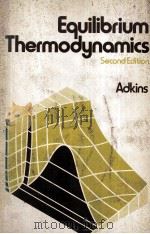
- EQUILIBRIUM THERMODYNAMICS SECOND EDITION
- 1975 MCGRAW-HILL BOOK COMPANY (UK) LTD.
-

- FICTION AN INTRODUCTION TO READING AND WRITING SECOND EDITION
- 1987 PRENTICE HALL
-

- THERMODYNAMICS AN ADVANCED TREATMENT FOR CHEMISTS AND PHYSICSTS SECOND EDITION
- 1950 NORTH-HOLLAND PUBLISHING COMPANY
提示:百度云已更名为百度网盘(百度盘),天翼云盘、微盘下载地址……暂未提供。➥ PDF文字可复制化或转WORD


